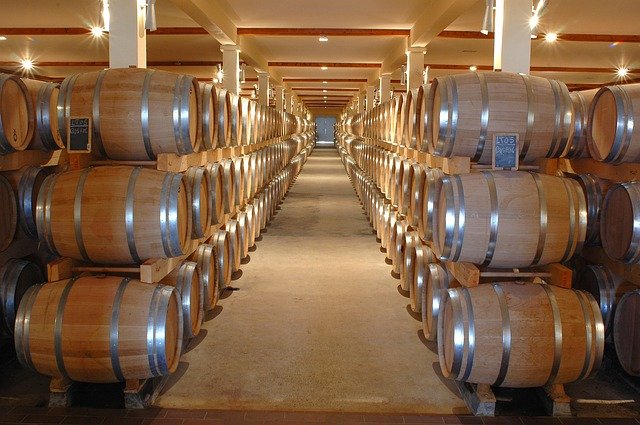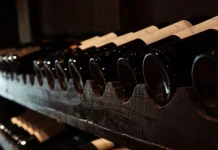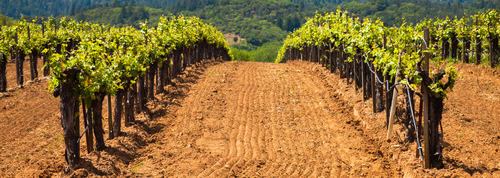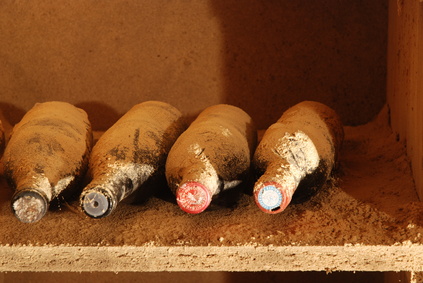Wines aged in oak barrels are part of the traditional side of the wine world ! For many it would be unthinkable to imagine a winery without barrels. But even if we could debate this point, we have chosen to talk to you about these casks, and more particularly about oak barrels, which represent the ultimate dominant wood species.
So why are they used, and what do they bring to the wine ?
The advantages of using oak barrels
Using a barrel is not a trivial act ! It will more or less impact the final style of the wine. Although it is also linked to a traditional aspect, there are many interests !
Using a barrel will indeed give birth to a whole range of complementary aromas, making the wine more complex ! So, if you were surprised to find some vanilla or coconut notes in your wines, well this is due to the use of different barrels in the process of maturation. The barrel gives these typical flavors to the wines.
Using these containers also allows for the addition of more or less tannic matter, while softening the wine and its naturally present tannins. The cause ? The benefit of time but especially the fact that the barrels are slightly porous. A micro-oxygenation results, allowing the wine to become rounder and softer. This is particularly important for very powerful wines, such as those made from Cabernet-Sauvignon, Malbec or Zinfandel.
Barrel differences = aroma differences
The aromas linked to the use of barrels can fluctuate in terms of intensity, but also in terms of aromatic differences.
Age of the oak barrels
Firstly, depending on the age of the barrel, the aromatic notes will be more or less intense. To obtain powerful vanilla notes, for example, you should use new French oak barrels. We can then play on the intensity of these notes by blending wines aged in new and older barrels. The older barrels have seen the maturation of one or more wines and therefore give significantly less aroma.
Size of the oak barrels
Then, the size of the container is also important, as not all barrels have the same capacity. The larger the barrel, the less interaction there is between the material and the container and therefore the less transfer of woody notes.
Origin of the wood
The origin of the wood and even its essence will also make a difference. We generally use oak, but we could use another type of wood, like beech for example.
Also, depending on the origin of the oak, there can be differences in taste, depending on whether the oak is American (coconut flavors) or French (vanilla flavors). These are the two most known origins, the most famous being French oak.
Oak barrels manufacturing
Finally, the barrel manufacturing itself can induce aromatic differences in the wine. Indeed, the inside of the barrel is more or less burned during the barrel making process. There are different degrees of toasting that will reveal a significantly different flavor impact.
This means that there are many options that winemakers are constantly testing to get the best configuration between the different batches they have. Winemakers even use barrels from different cooperages for this same reason, which increases the range of possibilities even more !
Are there alternatives to oak barrels ?
As a result of the price of raw materials continuing to rise, we may be led to look for less expensive alternatives, which still allow the wine to benefit from aromatic woody notes. Indeed, the price of an oak barrel can vary on average from 700€ to more than 1000€. Taking into account the regular renewal of these barrels, the investment is significant.
These alternatives are the staves (pieces of barrels) or wood chips that are immersed and infused in inert containers, such as stainless steel tanks. This does add some woody notes to the final result.
However, these techniques could be criticized for being of poor quality, in addition to giving off a less prestigious image.
The main counter-arguments are the loss of the micro-oxygenation benefit that barrel ageing provides. Also, the quality of the wood used is generally of lesser quality, and finally, the homogenization in a large tank could be questioned. However, all this has to be put into perspective because it would be possible to add micro-oxygenation by different processes. Some winemakers have adopted their own system for this. As for the final result, you would certainly have a lot of trouble distinguishing the type of wood used on some examples…
Wines matured in oak barrels represent a long-standing tradition in the world of wine, and even if some fashions are changing things, such as the renewed interest in amphora, we can bet that barrels will be around for a long time to come!








